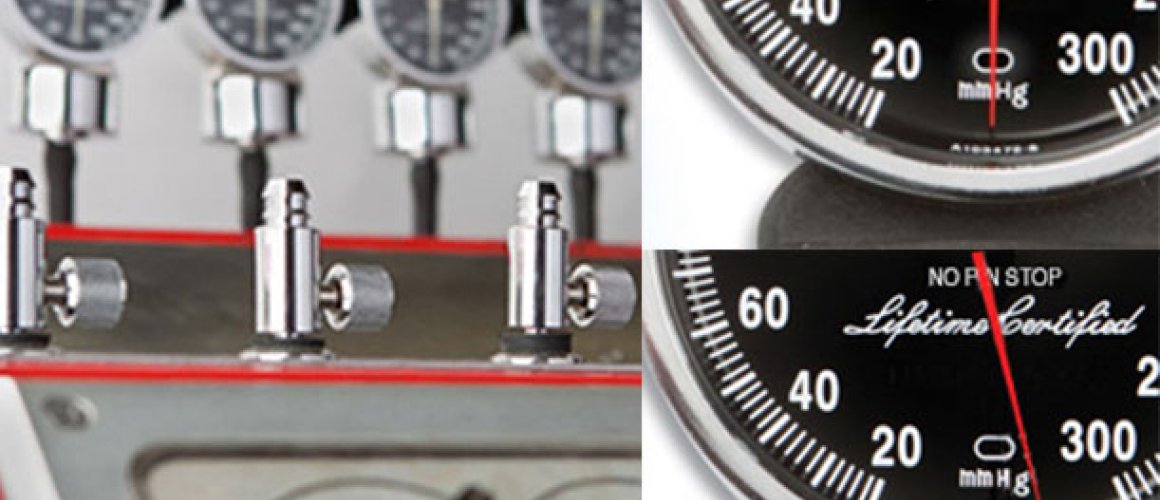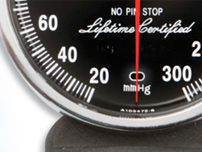- Products
- New Products
- Featured Products
- Color and Print Themes
- Blood Pressure Measurement
- NIBP / Vital Sign Monitors
- Digital Aneroid Sphygmomanometers
- Palm Aneroid Sphygmomanometers
- Pocket Aneroid Sphygmomanometers
- Pro's Combo Sphygmomanometers
- Multicuff Sphygmomanometers
- Clock Aneroid Sphygmomanometers
- Mercury Sphygmomanometers
- Home Blood Pressure Measurement
- Adcuff +
- Gauges
- Bulb & Valves
- Disposable Cuffs
- Reusable Cuffs & Bladders
- Sphygmomanometer Accessories
- Sphygmomanometer Parts
- Caseware
- CPR / Airway
- EENT
- Instruments & Accessories
- Laryngoscopes
- Penlights
- Pulse Oximeters
- Stethoscopes
- Thermometry
- Vital Signs Monitors
- Solutions
- About ADC
- Learning Center
- Support
- Blog
- Contact
Check the Calibration of Your Sphyg

Written By:
Michael Falco / Quality Manager
Posted On:
February 19, 2021
Accurate measurement of blood pressure is critical to helping your patients achieve positive health outcomes. While we have reviewed details relating to measurement in previous blog articles, including 10 Steps to Accurate Manual Blood Pressure Measurement and 10 Factors That Can Affect Blood Pressure Readings, another critical factor in obtaining good readings is maintaining your equipment.
Well maintained, calibrated blood pressure equipment (aneroid sphygmomanometers, digital sphygmomanometers, or mercurial sphygmomanometers) are key to obtaining accurate blood pressure readings. Numerous studies performed over the years have found that maintenance and calibration of equipment can be an oversight in healthcare facilities and that the status of this equipment is just as important as proper measurement techniques. It is important that all healthcare providers consider the accuracy and quality of blood pressure equipment when purchasing new devices and that existing equipment be checked periodically for accuracy and regularly maintained.
Aneroid sphygmomanometers are ubiquitous throughout the healthcare sector and can be a reliable instrument for blood pressure measurement if their calibration is maintained. Most aneroid sphygs have a small oval or rectangle on the front of the gauge referred to as the calibration mark or zero point. If the indicator needle falls OUTSIDE of this oval when the device is fully deflated (and preferably disconnected from the inflation system), then the unit is out of calibration and should not be used until it has been serviced.
.jpg) With needle outside the oval, you can be 100% sure the unit is OUT of calibration
With needle outside the oval, you can be 100% sure the unit is OUT of calibration With needle inside the oval, you cannot be 100% sure the unit is in calibration. Periodically check against a calibrated reference standard.
With needle inside the oval, you cannot be 100% sure the unit is in calibration. Periodically check against a calibrated reference standard.The reverse is not necessarily true though, and a gauge with an indicator needle inside the calibration mark may still be out of calibration. This is because aneroid sphygmomanometers are mechanical gauges with working parts, such as springs and bellows, that may wear over time causing non-linear errors in measurement. This is why it is important to select a trusted brand when purchasing an aneroid sphygmomanometer and to periodically check the calibration of your instrument against a calibrated reference standard (a manometer of known accuracy with a higher resolution display). These types of checks should be performed at least once every two years or more frequently if your gauge is heavily used (10,000 uses in a year for example) or has been subjected to a shock from being dropped, etc.
Mercurial sphygmomanometers, not having any moving parts, will remain accurate provided that the meniscus of the mercury column is within 3 mmHg of the zero point when the unit is fully deflated. As such, they are less susceptible to loss of calibration unless they are physically damaged.
Automated or digital blood pressure monitors (both consumer and clinical grade) will typically perform a calibration self-check during power on and will display an error message or other on-screen notification if there is an issue. That being said, check your devices regularly for damage or signs of wear or tear that could impact the performance of the device, particularly with the cuffs.
In the end, spending a little more on a brand you trust and taking the time to care for your instrument will ensure years of excellent service as well as reliable and accurate readings.
